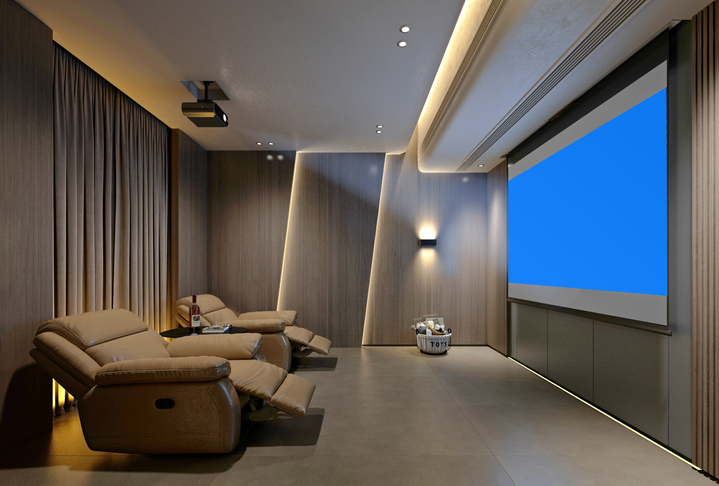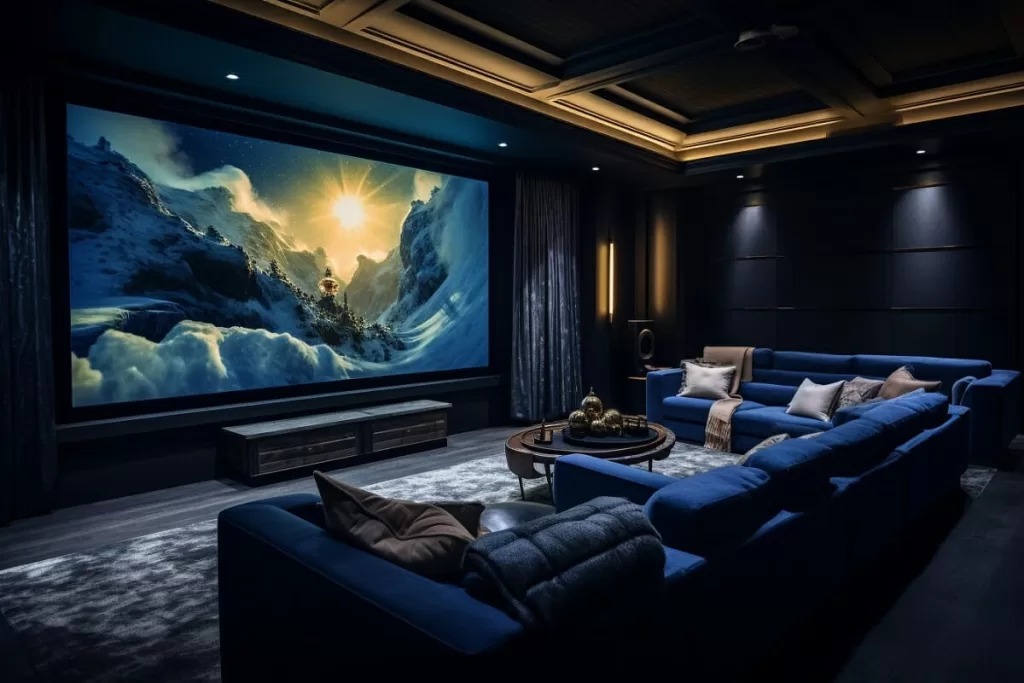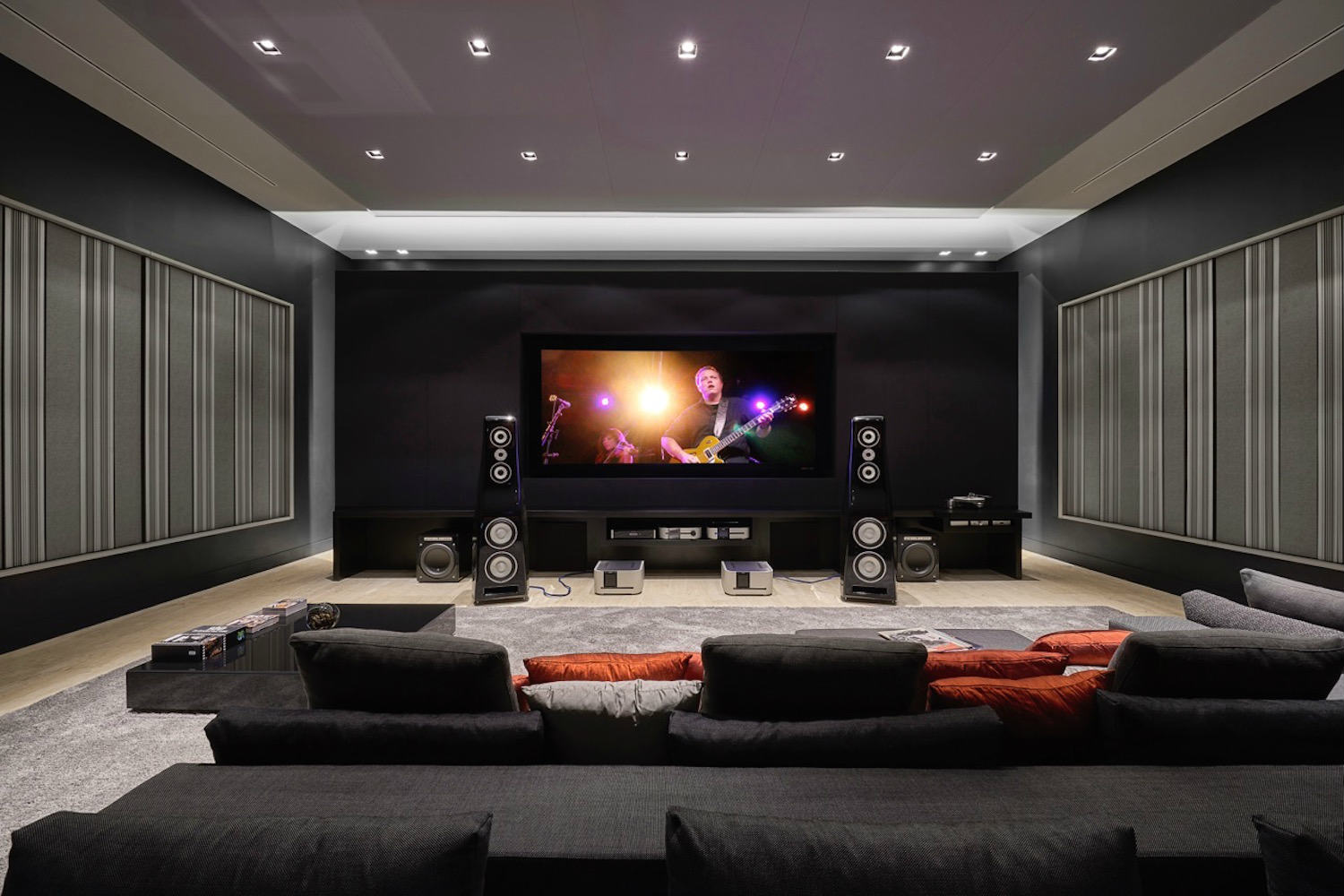How to Locate the Best Home Theater Tampa Installation Services
How to Locate the Best Home Theater Tampa Installation Services
Blog Article
Home Theater 101: Every Little Thing You Need to Know for a Motion Picture Experience at Home
Developing a home cinema that matches the motion picture experience of an industrial theater involves careful consideration of several parts, consisting of display option, sound systems, and area layout. Each element plays an essential function in attaining the wanted ambiance and functionality. Whether you are contemplating the optimal display dimension or the ins and outs of border audio, understanding these fundamentals is vital. As we check out these vital elements, it ends up being apparent that the options made can considerably affect your overall viewing experience, leaving one to ponder how these choices will certainly shape your personal movie theater.
Selecting the Right Screen
When establishing up a home theater, picking the right screen can make or break the viewing experience - home theater installation tampa. The display serves as the focal point of your arrangement, affecting picture quality, viewing angles, and overall aesthetic. Secret variables to consider include screen kind, resolution, and size
Initially, figure out the appropriate display size based on your space measurements and seating range. Next, select in between different display kinds, such as fixed-frame, mechanized, or retracting screens, each offering unique advantages.
Resolution is another essential variable. For a truly immersive experience, think about a display made for 4K and even 8K material, ensuring sharpness and quality. In addition, take into consideration the display's gain, which affects brightness and contrast; a greater gain can improve illumination in well-lit spaces, while a lower gain might be much more suitable for darker atmospheres.
Choosing Audio Equipment
Audio devices is an essential component of any type of home cinema system, substantially boosting the general watching experience. The selection of audio gear can identify the depth, quality, and immersion of sound, crucial for producing a motion picture atmosphere.
When choosing audio equipment, consider a surround stereo, which normally includes a receiver, numerous speakers, and a subwoofer. A 5.1 or 7.1 channel system is advised, where the very first number represents the audio speakers and the 2nd the speaker, providing an immersive soundscape. The receiver is the heart of the system, handling sound and video signals, and need to support modern styles like Dolby Atmos for an enhanced spatial experience.
Quality audio speakers are necessary; try to find versions that offer a balanced sound profile with excellent bass feedback. Floor-standing speakers can generate richer sound, while bookshelf choices save space. Furthermore, take into consideration cordless options for ease of installment, although wired systems commonly supply remarkable performance.

Optimal Seating Plans
Developing a suitable home movie theater experience hinges substantially on ideal seating arrangements. The arrangement of seats plays a critical duty in both convenience and seeing quality, straight influencing the general cinematic experience.
First, consider the display size and viewing range. A typical guideline is to place seats at a distance approximately 1.5 to 2.5 times the angled size of the screen. This makes certain an immersive experience without straining the eyes.
Next, altitude is important. The back rows need to be higher than the front to stay clear of obstructions if your seats is in a tiered style. For level seating, ensure that the front row is not also near to the display, and that every home theater tampa person has a clear line of sight.
Moreover, think about the arrangement in terms of social characteristics. Group seats can enhance the public experience, while individual seats might be preferred for personal viewing.

Last but not least, focus on convenience with ergonomic seating that supports prolonged watching periods. Integrating recliners or cushioned seats can dramatically enhance the experience, making the home movie theater a recommended destination for both enjoyment and relaxation.
Lighting and Ambiance
Effective illumination and setting are important elements of a properly designed home cinema, as they considerably affect the watching experience. The right lighting can enhance the cinematic feeling, while inadequate selections can diminish it. For optimal results, think about a split lights strategy that consists of ambient, job, and accent lighting.
Ambient lighting offers general illumination, making sure that the room is not entirely dark, which can stress the eyes. Dimmer buttons are very advised, enabling modifications based upon the material being watched. Job lights, such as wall surface sconces or flooring lights, uses practical lighting for activities like reading or navigating the area without interfering with the total ambience.
Accent illumination can be utilized to highlight architectural attributes or create focal factors, adding depth and interest to the area. LED strip lights behind screens or along shelves can give a refined glow that enhances the aesthetic experience without overwhelming the visitor.

Wiring and Installation Tips
A well-planned wiring setup is crucial for attaining optimum performance in your home cinema system. Proper circuitry not just makes sure top notch audio and video signals yet likewise enhances the total aesthetic of your room. Begin by drawing up your layout, recognizing where each element will be positioned, including your screen, audio speakers, and receiver.
When choosing cables, focus on high-quality, suitably evaluated circuitry to decrease signal loss. HDMI wires must be used for video links, while audio speaker wire should match the specs of your speakers and amplifier. Go with in-wall rated wires to comply with safety and security requirements and maintain a tidy appearance.

Verdict
In recap, producing an exceptional home theater experience requires careful consideration of various elements, including screen selection, audio equipment, seating arrangements, lighting, and electrical wiring. By focusing on these variables, a motion picture ambience can be efficiently reproduced, enabling for immersive checking out experiences that equal standard movie theater setups.
Producing a home movie theater that matches the cinematic experience of a commercial theater entails cautious consideration of multiple components, consisting of screen selection, audio systems, and area format.When setting up a home theater, selecting the appropriate display can make or break the viewing experience. Next off, select between various display types, such as fixed-frame, motorized, or retracting displays, each offering distinct benefits. For a genuinely immersive experience, think about a screen made for 4K or even 8K content, making certain intensity and clarity.In recap, developing an outstanding home movie theater experience needs mindful factor to consider of different elements, consisting of screen option, audio devices, seating setups, illumination, and wiring.
Report this page